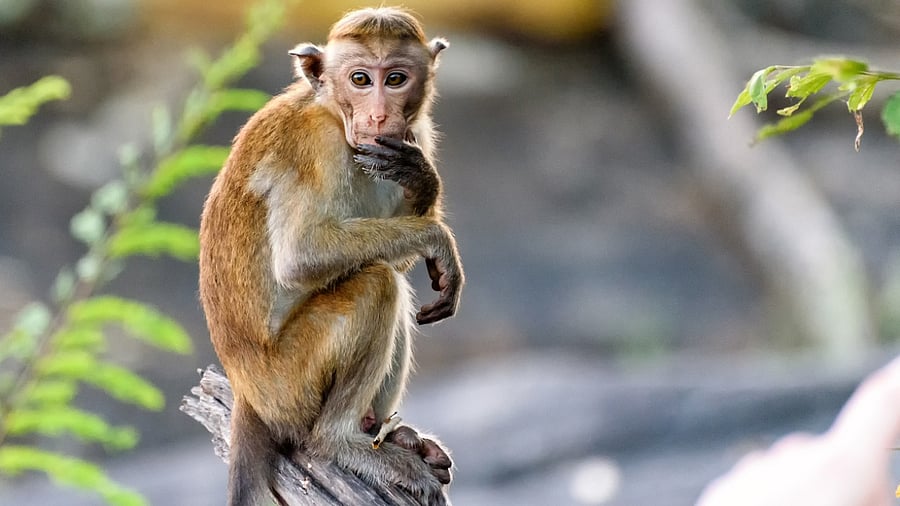
For years, we have been drawing parallels between orangutans and humans to figure out the similitudes that exist, but since most of these studies were done on a purely somatic level, the comparison still feels a little incomplete. Perhaps, a closer psychological analysis may reveal a lot more about our evolutionary relationship with these old primates.
Here’s one example. In theory, male orangutans are larger and have different facial features. But if you give the troop a closer look, you would notice how one male stands out — looking stunningly unique with its extraordinary size, distinct cheek-pads and a larger throat sac. The difference is so stark that one may confuse the other males with their female counterparts.
Scientists have employed various methods to dig deeper into this bizarre phenomenon but the results so far have been inconclusive. However, there was one interesting observation — orangutans physically mature only when they are entirely convinced of their overwhelming superiority. And this is precisely why the other males in the cluster — despite being the same age — remain in their juvenile form until the dominant male is beaten, bruised, or dead.
Although it is rare to sight another such occurrence in the wild, it does resemble the human maturation process in a distinctly parabolic sense. Because even with humans, the presence of a dominant protective figure — be it a person, thing or circumstance — often delays the development of the adult in them.
Here’s some perspective: Imagine having a funder who is constantly interested in investing in your business, or a hefty insurance backup to cover you from all possible losses. The likelihood of you repeatedly failing will be way higher than outright success. Now, imagine having little or no money to reinvest and a near-zero backup in case of an unexpected loss. The off-the-charts commitment levels and diligence you display will in all likelihood, take you to success. Perhaps, this explains why the jaw-dropping accomplishments of the poor and underprivileged making headlines doesn’t surprise us anymore.
With almost no financial cushion to rely on and a toothless policy structure that undermines their efforts, these champions consistently manage to pull it off with vigour and valiance. True, not everyone succeeds in this endeavour, but it does indicate the sheer mental strength they possess to take even the most treacherous paths and yet, come out successful.
For their silver-spooned counterparts, however, a departure from normalcy would prove utterly catastrophic.
The 2016 Malayalam classic 'Jacobinte Swargarajyam' renders a near-perfect representation of this by explaining the story of Jerry — an aimless young man, who is suddenly forced to fill in the shoes of his father and lift the family out of an unexpected crisis.
In the abrupt absence of his father, Jerry is caught completely off guard. He isn’t sure how to handle the lenders, is a novice at negotiation, and fails to impress the people he meets to spark a business deal.
Much like how the death or disappearance of a dominant orangutan offers the chance for another to mature, Jacob’s absence — although undesired — presents Jerry with an opportunity to lead from the front and develop the strength and resilience he badly needs. Sadly, his inbuilt fragility fails to embrace the role.
He approaches Philip, a friend of his father, to tearfully address his concern; but disappointed at Jerry’s feeble approach, Philip brutally dismisses his cry of dismay and takes him for a short ride instead, to show how thousands of industrious young men toil their way out of destitution in the buoyant streets of Dubai.
Although crude, it is this piece of advice that steadily instills life into Jerry’s shot at redemption.
‘Jacobinte Swargarajyam’ was by no means a glossed up cinematic manifestation of human maturation. It was instead the true-life saga of an Indian family that went through a frightful financial crisis in Dubai for nearly half a decade. And in varying degrees, a story that we are all an integral part of.
Having said that, the tale of Sajaya Kumar — a differently-abled artist from Kollam, Kerala — is a complete departure from the classic model. With his father dying at an early age and a younger sister to be taken care of, the only privilege he was left with was a pair of legs to walk. And it was with this that he pursued his passion for art and made a name for himself. Today, Sajaya is an arts teacher who actively provides services to four different schools in the state.
Isn’t it ironic how a little boy born without hands now serves as a helping hand to many aspiring artists out there?
For many in India, being born into deprivation is nothing new. We live in a country where over 134 million people hardly scrape through each day with an average daily earning of Rs 150 or less. Without a regular income, a roof over their head or a strong parental figure to protect them, most of these children are raised with a will of steel that, if given the right circumstance, could be used to accomplish the improbable. Maybe it’s a style worth emulating.
(The writer is a qualified tax advisor, management consultant and corporate trainer, who has adjudicated several competitive events in the domain of management in India)